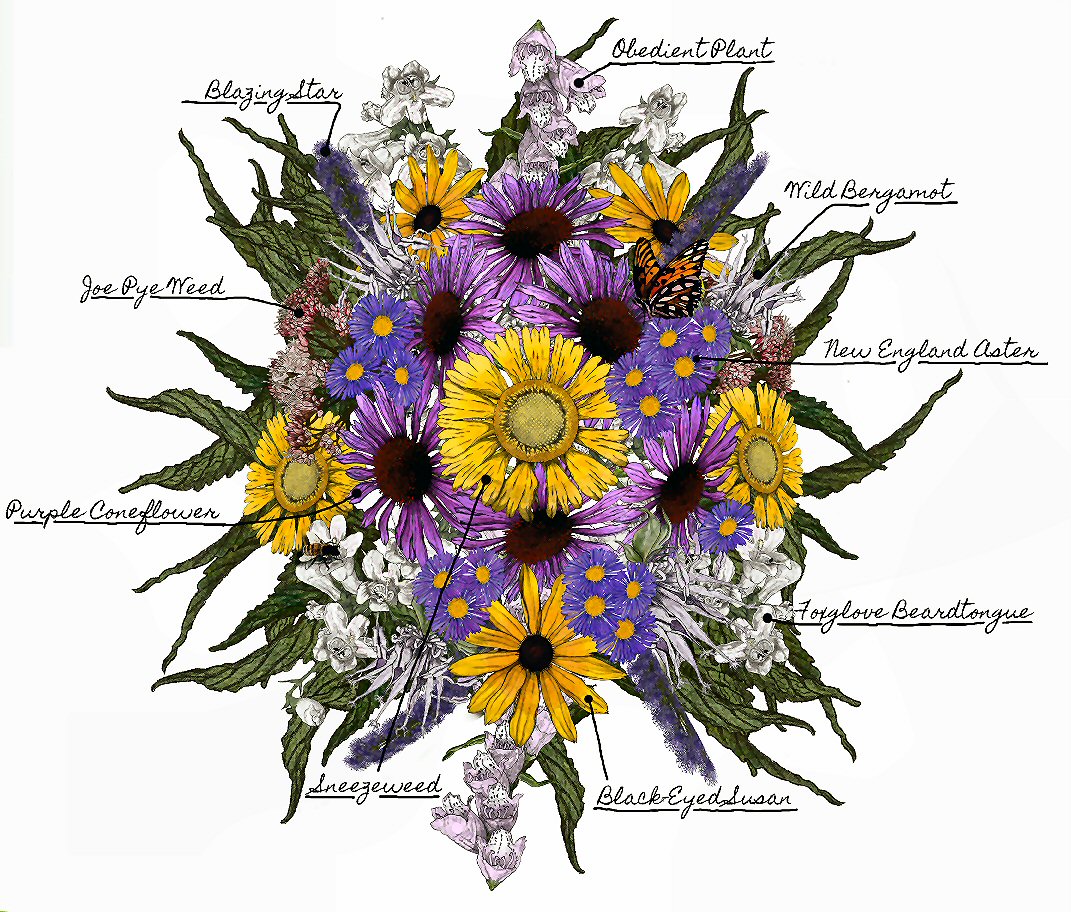Rain Gardens
Slow Down, Soak In & Clean Up Stormwater - Naturally
View the Rain Gardens signage placed at Griggs & Hoover Reservoirs
 How Do They Work?
How Do They Work?
When it rains, a rain garden acts as a basin to capture and absorb water runoff. See larger illustration.
Nutrients, oils and other pollutants are then filtered by the soil and plants.
Deep roots and pervious soils help to slow stormwater's flow, filtering out pollutants and keeping surface & ground water cleaner.
Water Fact: Did You Know?
Rain gardens absorb 30% more water than the same size area of turfgrass.
 Plant A Beneficial Bouquet of Natives
Plant A Beneficial Bouquet of Natives
Ohio-native plants have deep root systems and tolerate drought. This means less maintainance & watering. They also provide wildlife habitat. See larger illustration with labeled flowers.
Sow the Seeds, Reap the Benefits
Plant a rain garden in your yard to protect water quality and:
- Reduce lawn maintainance
- Minimize area flooding
- Recharge groundwater